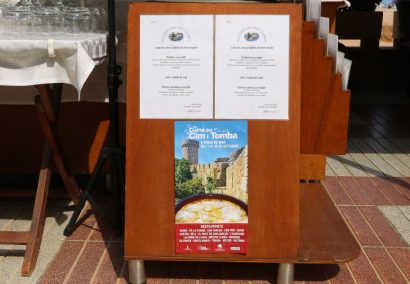Many restaurants like to get creative with their dessert menus — and foodies dining at such restaurants know and even expect it. Names that are commonly associated with savoury dishes appear more and more often on dessert lists. Mango tartare and pineapple cannelloni are definitely not unheard of in leather-bound menu tomes resting on white table linen of high-end dining establishments. The assumption is one of diners’ familiarity with the culture of dining out (put it simply, fancy food) and of the implicit understanding that pear carpaccio refers to the form, as opposed to the substance, of the dish.
As a guest, you usually feel good ordering a white chocolate pizza and then receiving a slice of chocolate-drenched scrumptious sweet pastry. However, this dessert menu naming game can be a dangerous one that can spectacularly backfire in places where you least expect it.
For instance, in the Costa Brava restaurants specializing in traditional regional cuisine, an offering of sweet botifarra (botifarra dolça) is common. Botifarra is a type of Catalan pork sausage, therefore, ordering its sweet “version”, you may quite rightfully salivate at the idea of a sausage-shaped shortcake, some nut-stuffed fudge, turron, or anything else similarly appetizing.
You are in for a surprise once the server puts a place of the real, yet sweet, pork sausage in front of you — this, right after a hearty meal of tender filet mignon and quite possibly a helping of regular botifarra as an appetizer, washed down with a glass of nice DO Empordà red. If imagining eating sweet pork sausage makes your stomach turn, you are far from alone. Botifarra dolça is one of the rare traditional dishes that inspire equal amounts love and hate, both in Catalonia and outside of it.
There are countless recipes of sweet botifarra floating around. What the preparation process comes down to is boiling sausage rounds in sweetened water on low heat until the liquid thickens. Adding spices like cinnamon, lemon zest or apple rind to the broth is optional, as is using dessert wine like Moscatel instead of water.
Sweet botifarra originated in Empordà, the historical region now split into the Baix Empordà and Alt Empordà municipal districts. The agricultural products of the area enjoy a stellar reputation for their quality and the ongoing usage of traditional recipes. The reputation is reinforced and safeguarded by the local business association that bestows the coveted seal of approval Productes de l’Empordà on products of the top producers of the region.
Sweet botifarra is part of this elite list, joined by the likes of Palamos prawns, Pals rice, and the ricotta cheese from Fonteta.



